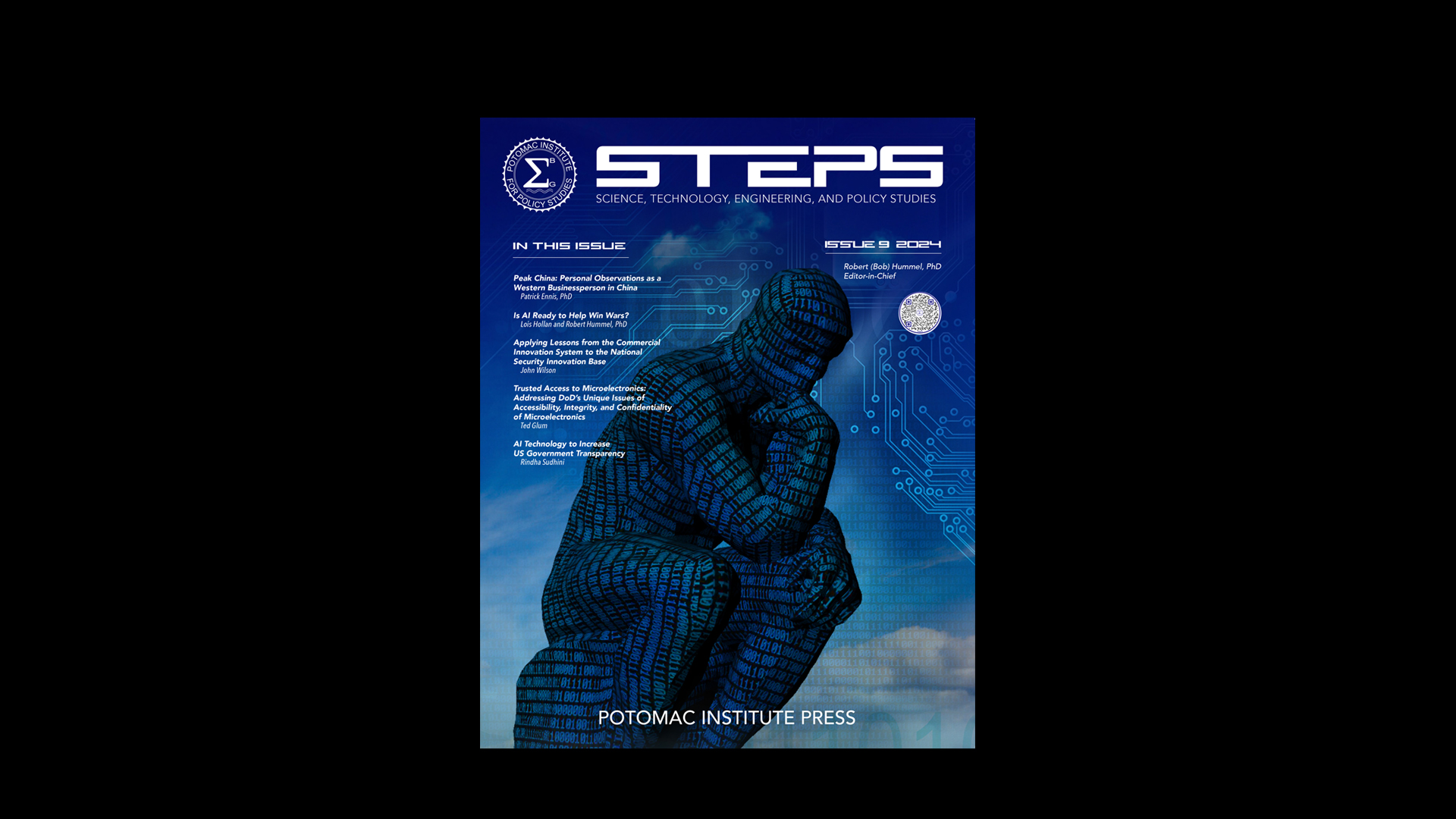Global Competition Challenge: A New Vision for Space
Dr. Jerry Krassner
This email address is being protected from spambots. You need JavaScript enabled to view it.This email address is being protected from spambots. You need JavaScript enabled to view it.
Phone: 301 873-5996
Climate change, global pandemic, international political/military competitions… there are numerous global competitions that have the potential to radically change the world. Another of these, that is somewhat simmering in the background, is the competition for dominance in the space domain. Based primarily (but not exclusively) in the technology sector, this competition rarely breaks through to the front pages of the mainstream media. But it is a competition that can re-make the world.
If one believes that a nation can’t be a global power without either military strength, economic strength, or both, then the emerging revolution in space should be considered a primary area of societal competition. This is not a competition for unilateral military control, but it is a competition to harvest the economic benefits of space primacy. The US’ leadership in space is currently under challenge, but the US leadership in technology and innovation provides an opportunity to counter such challenges.
For over 60 years, since the start of the Space Age, nations have produced increasingly capable launch vehicles, spacecraft, and associated infrastructure. Today, there is a direct link between those earlier days and today’s space operations. “We still do things the old-fashioned way”. Leaders in this field have benefitted in terms of their national security, economic return, and international prestige. But the “old way” comes with limitations.
For example, spacecraft are generally limited in size to the available volume in a single launch fairing. They are launched with their “lifetime” load of fuel and other consumables. They are launched into an orbit that they are restricted to for their entire operational lifetimes. And they are generally unable to be repaired or updated to reflect newer technology or changes in mission.
There have been limited counter-examples to this. The ISS was assembled in space using multiple launches of various components. The Hubble telescope was repaired several times, and its instruments upgraded as technology improved. Commercial re-fueling of satellites has been demonstrated in geosynchronous orbit.
But these have been largely one of a kind, bespoke designs that were not based on common infrastructure.
It is time to implement a new space infrastructure ecosystem that will unlock greater economic opportunity, enable more capable/cost effective missions, and position the US to lead the world to the next generation of space activity. The societal benefit of this will be economic return and international prestige that will enable continued US success in global competition similar to the benefits achieved from the earlier missions such as Mercury, Apollo, and shuttle.
But this will not come without competition, both from peer competitors and from friendly space-faring nations, who see the same possibilities.
Technology now offers the ability perform missions such as in-space assembly, repair and refueling, up/down/cross orbital transportation, on-orbit manufacturing/assembly, and similar functions that will enhance mission effectiveness and reduce cost. International standards groups like DARPA’s CONFERS provide a model for global adoption that will further enhance the benefits of next-generation mission and platform designs.
This vision has direct parallels to the infrastructure that enables the terrestrial US economy today. Imagine the US without an interconnected transportation network of highways, rail, and air networks. Imagine a 21st century economy where all construction came from a single factory-limiting the size, shape, and function to what that one factory could provide (metaphorically analogous to launch fairing limitations). Imagine a country unable to service and maintain its infrastructure or critical assets; a country with no way to repair a water main break, or that throws away a car after a single tank of gas; a country unable to update its technology over operational lifetimes. Such a nation would not likely be considered a global leader.
This is analogous to the current state of on-orbit infrastructure, where spacecraft are just about the only component in any domain that is fielded, then never maintained, upgraded, refueled or closely inspected.
It is now within our ability to develop a space infrastructure ecosystem that mirrors the advantages of the terrestrial infrastructure. That is, an ecosystem that would:
- Significantly reduce the cost and time to access space;
- Enable new functions and capabilities either based on launched resources or one that made use of in-situ resources and space-based assembly;
- Set the standards for future trade and norms of behavior for the world to emulate;
- Expand the U.S. industrial base, enabling space development to be performed by a wider set of companies at lower cost;
- Motivate the next generation of Science, Technology, Engineering, and Math (STEM) students;
- Maintain U.S. leadership of civil space exploration, commercial space applications and national security space mission.
Such an infrastructure would provide the opportunity for enormous economic growth, greater security in the global commons of space, and motivate commercial investment similar to past historical examples, such as the Erie Canal, the transcontinental railroad, and the interstate highway system. Each of these generated enormous long-term benefits across multiple sectors, using a variety of public and private funding mechanisms. Many of these benefits were not foreseen until much later.
The nation that more expeditiously implements this new vision will be recognized as a leader in space. That nation will be in a leadership position to define the norms and standards for the rest of the world. Its advanced implementation, and resulting operational benefits, will generate economic return on its investment. It will be seen by the next generation of scientists and engineers as the preferred nation to set up a career.
The nation that fails to lead this “revolution in space affairs” will forfeit influence of the anticipated multi-trillion-dollar space economy. Without that economic strength, terrestrial global leadership will be severely inhibited.
This is not a call for unilateral US space dominance. Rather it is a call for US leadership. The costs of such space infrastructure might be beyond the means of any one country. An attempt to “monopolize the market” might lead to alternative implementations by other countries, which would lead to a competitive “Balkanization” of the space infrastructure, with resulting reduced interoperability, differing technical standards and similar complications that would somewhat negate the potential benefits outlined here.
In the global competition for leadership in space, the US can continue the incremental evolution of space activity, or we can disrupt and aggressively implement a vision of more capable, cost-effective missions. The latter will result in greater economic growth, enhance national security, improved workforce, and greater competitive advantage in a critical domain of international competition that will only continue to grow.
In short, a critical societal challenge is the future of space leadership. Continuing to do things the same old way reduces the barrier to entry for global competitors and risks others taking the lead. The future of global leadership is at stake.
-------------------------------------
Global Competition Challenge: A New Vision for Space
Dr. Jerry Krassner
This email address is being protected from spambots. You need JavaScript enabled to view it.This email address is being protected from spambots. You need JavaScript enabled to view it.

















